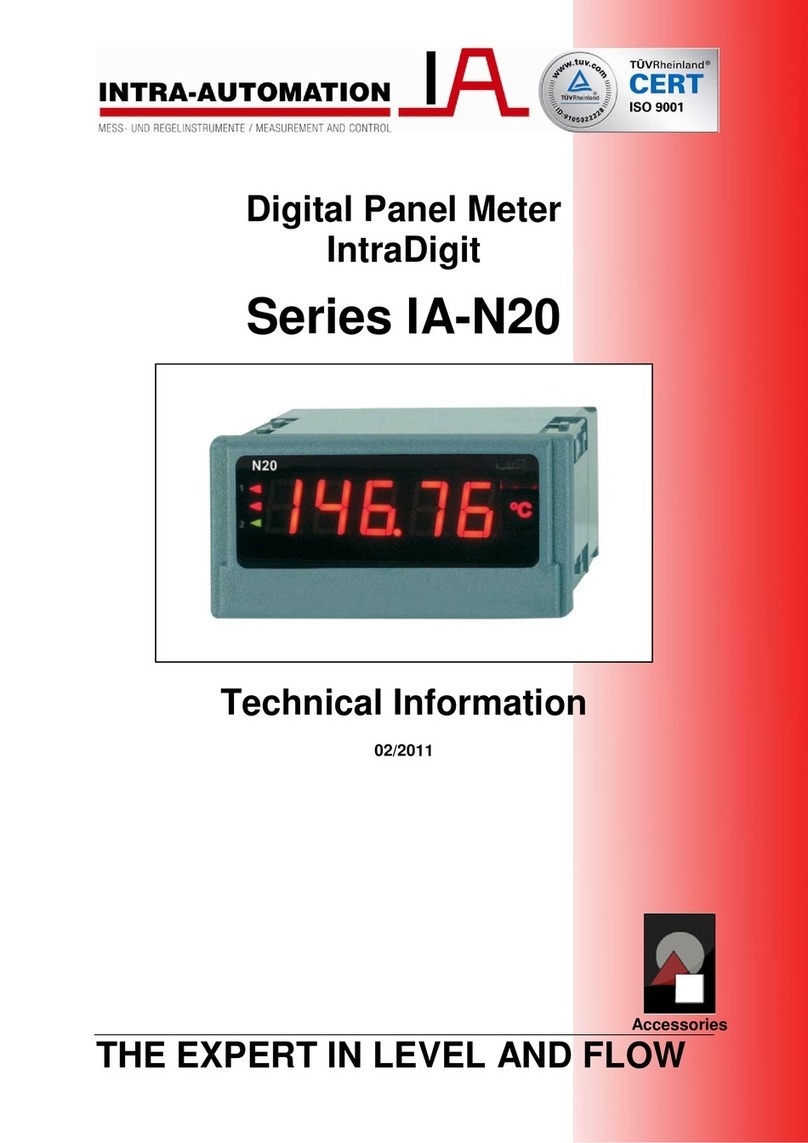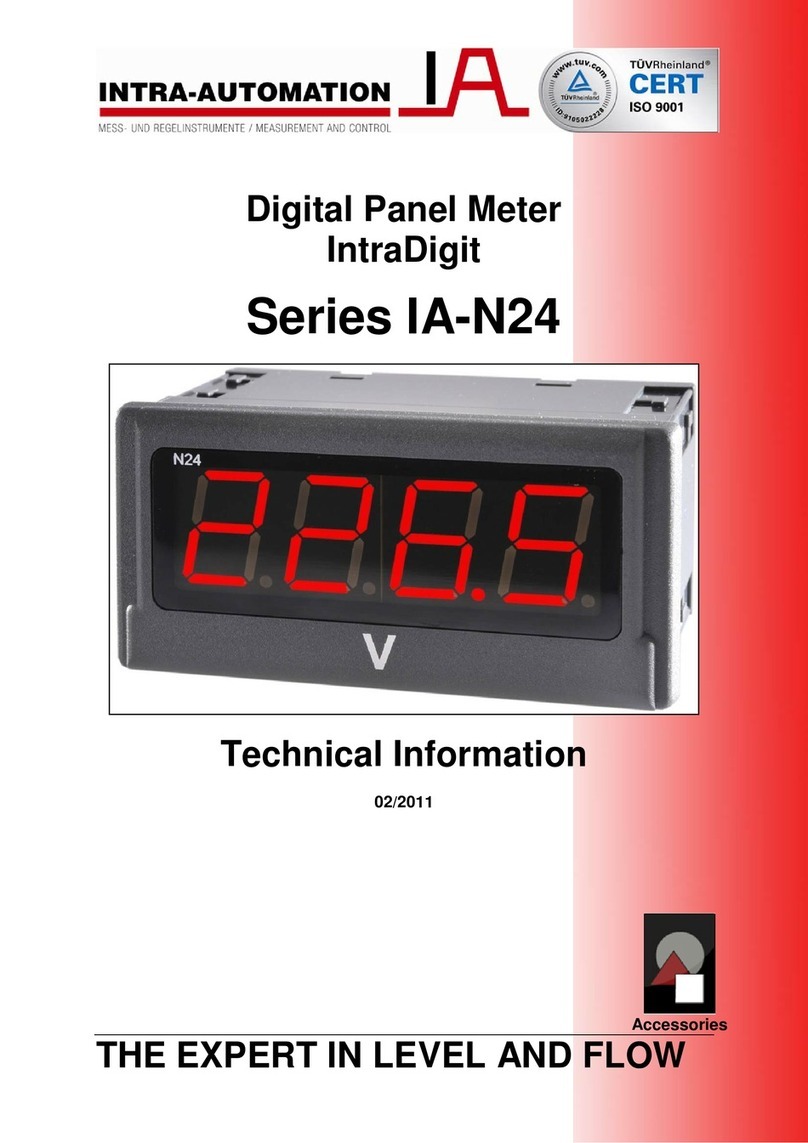Gas- and Steam Flowcomputer DigiFlow 515 Operating Manual
3
Directory
1 INTRODUCTION...............................................................................................................................................................................5
2 ORDERING DETAILS ......................................................................................................................................................................6
3 TECHNICAL DATA ..........................................................................................................................................................................6
4 ALGORITHMS...................................................................................................................................................................................8
5 OPERATION.......................................................................................................................................................................................9
5.1 FRONT VIEW ........................................................................................................................................................................................9
5.2 GENERAL.............................................................................................................................................................................................9
6 APPLICATION.................................................................................................................................................................................10
6.1 THE DIGIFLOW 515 AS GAS COMPENSATION CALCULATOR..................................................................................................................10
6.1.1 Parameter setting of the flow calculator:.................................................................................................................................12
6.1.2 Application for Ideals Gases ....................................................................................................................................................13
6.1.3 Application for General Gases.................................................................................................................................................14
6.1.4 Natural Gas..............................................................................................................................................................................15
6.2 THE DIGIFLOW 515 FOR THE STEAMING QUANTITY MEASURING..........................................................................................................16
6.3 THE DIGIFLOW 515 AS HEAT CONSUMPTION CALCULATOR..................................................................................................................17
6.3.1 Programming The Flow Computer...........................................................................................................................................18
6.4 FILTERING OF THE FLOW INPUT .........................................................................................................................................................19
6.5 CORRECTION OF THE NONLINEARITY .................................................................................................................................................20
6.5.1 Correction for the frequency input ...........................................................................................................................................20
6.5.2 Linearization for the analog input............................................................................................................................................20
7 PROGRAMMING AND PARAMETER SETTING......................................................................................................................21
7.1 KEY DESCRIPTION..............................................................................................................................................................................21
7.2 CONFIGURATION OF A SET..................................................................................................................................................................21
7.3 INPUT OF A NUMBER...........................................................................................................................................................................21
8 MENU TABLES................................................................................................................................................................................22
8.1 MAIN MENU......................................................................................................................................................................................22
8.2 BASE SETUP ......................................................................................................................................................................................22
8.3 MEDIUM PARAMETERS ......................................................................................................................................................................23
8.4 SIGNAL CHECK ..................................................................................................................................................................................23
8.5 FLOW PARAMETERS...........................................................................................................................................................................24
8.6 OPTIONS............................................................................................................................................................................................25
9 INPUT CIRCUITS............................................................................................................................................................................26
9.1 FREQUENCY SIGNAL...........................................................................................................................................................................26
9.2 ANALOG INPUTS.................................................................................................................................................................................28
9.2.1 Input of Pt100 RTD ..................................................................................................................................................................28
9.2.2 Analog 4-20mA input................................................................................................................................................................28
9.3 REMOTE SWITCHED FUNCTIONS..........................................................................................................................................................30
10 OUTPUT CIRCUITS......................................................................................................................................................................31
10.1 DIGITAL OUTPUT..............................................................................................................................................................................31
10.2 RELAY OUTPUT................................................................................................................................................................................32
10.3 RS232 OR RS485 INTERFACE..........................................................................................................................................................32
10.3.1 Hardware................................................................................................................................................................................32
10.3.2 Communication Protocol........................................................................................................................................................33
10.3.3 Printers Protocol....................................................................................................................................................................33
10.3.4 Host–Communication.............................................................................................................................................................33
10.3.5 Network communications........................................................................................................................................................34
11 OPTIONS.........................................................................................................................................................................................35
11.1 ANALOG OUTPUT .............................................................................................................................................................................35
11.2 CONTROL OF A SENSOR–PURGE–UNIT .............................................................................................................................................36
11.2.1 Time diagram Sensor–Purge–Unit.........................................................................................................................................36
11.2.2 Functional description: ..........................................................................................................................................................36
12 INSTALLATION............................................................................................................................................................................37
12.1 GENERAL.........................................................................................................................................................................................37
12.2 REAR VIEW .....................................................................................................................................................................................37
12.3 WIRING DESIGNATIONS....................................................................................................................................................................37
13 BLOCK DIAGRAM .......................................................................................................................................................................39
14 APPENDIX A ERROR DESCRIPTIONS......................................................................................................................................40
15 APPENDIX B PROPERTIES OF SOME GASES: ........................................................................................................................41
16 APPENDIX C APPLICATIONS (EXAMPLES)............................................................................................................................42





























